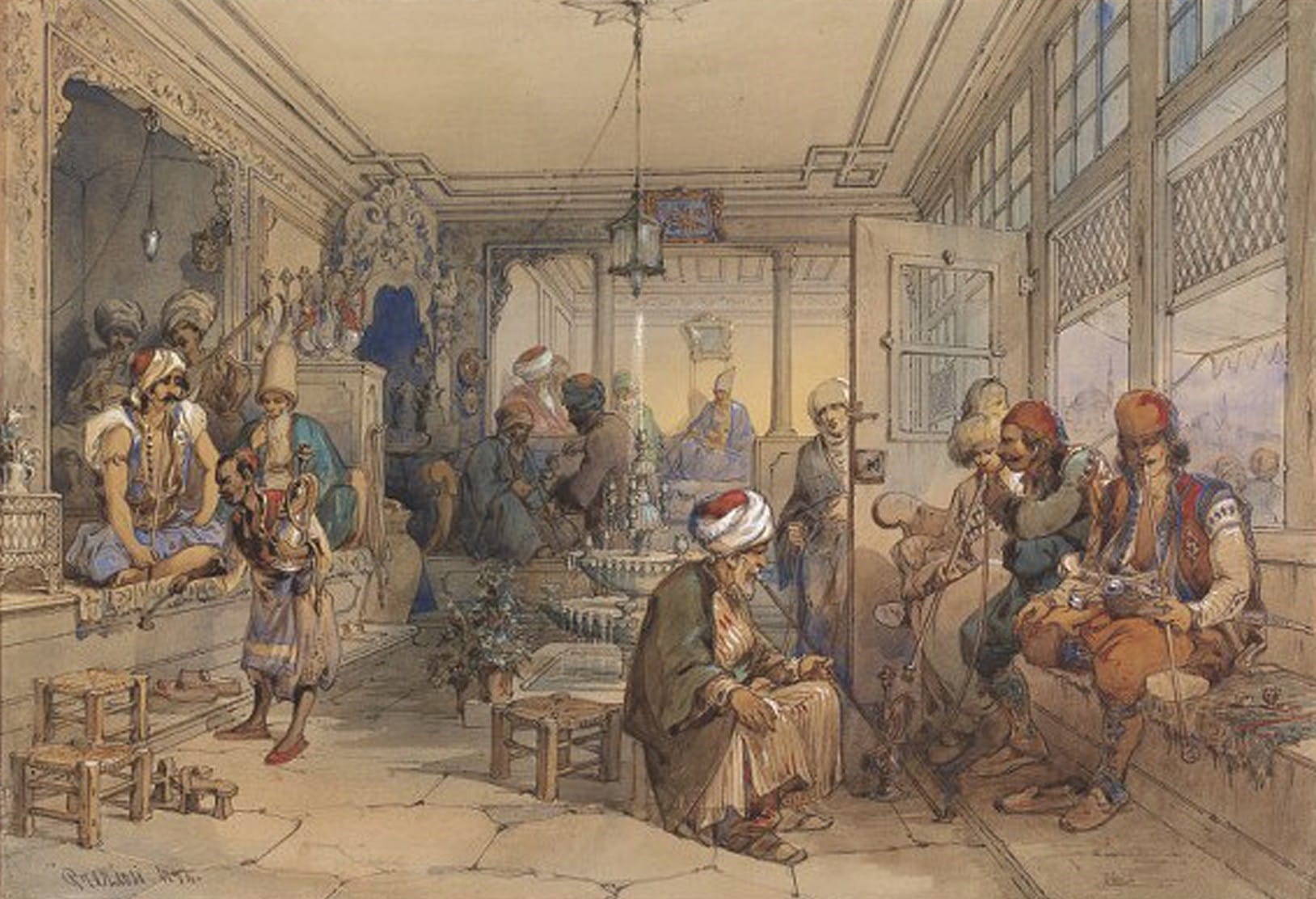The Rise of Coffee and Coffeehouses in the Ottoman Empire
How Coffee and Coffeehouses Shaped Ottoman Culture and Society

The Role of Coffee and Coffeehouses in Shaping Ottoman Social Life
The popularity of coffee in Ottoman lands dates back to the 1550s, fueled by the rise of coffeehouses. The first coffee shop was reportedly opened by two Yemenis in Istanbul during the reign of Suleiman the Magnificent, a known coffee lover. From then until the late 19th century, before tea became common, coffee reigned as the empire’s favorite beverage.
By the late 16th century, Istanbul had around 600 coffeehouses, and by the 19th century, this number grew to nearly 2,500, showcasing coffee’s immense popularity.
Coffeehouses as Social Hubs
Coffeehouses became important social spaces where people gathered to talk and share ideas. During times of unrest, Ottoman rulers often closed coffeehouses to prevent discussions that could incite rebellion.

A miniature displays the part of a coffeehouse in the second half of the 16th century.
Coffeehouses were often based around the customers’ social status and reflected a part of Ottoman society’s daily life. There were several type of coffee houses that existed, some of which we will look at here.
Craftsmen Coffeehouses
There were numerous shops in Istanbul: from blacksmiths to glass cutters, butchers to jewelers. If we think of the population of Istanbul then it will be easier to grasp the need for such types of socializing places. By the 17th century, one million people had settled in Istanbul. We can only guess how many sellers and craftsmen were there. These coffeehouses were located in areas close to the Fatih, Beyazıt and Sirkeci districts, since the heart of trade beat there. Shopkeepers, craftsmen, porters, carters, boatmen and such, used these coffeehouses as places to take a rest, where they may have talked about wars and politics, while also gossiping about city’s events like some drunkard’s scandal to Spanish newcomers.
Minstrel Coffeehouses
Minstrels were mostly found in rural areas, but Istanbul’s glamour also attracted them. We can compare them today to street singers. In general these minstrels, mostly in pairs, would show up at the same time. One by one they would sing their songs and insult their opponent. The goal was to sing the most attractive and influential lyrics and silence the opponent. On occasion, there would be musicians on stage who created live music shows. People would gather around them and watch the performances while drinking their coffee.
Janissary Coffeehouses
Janissaries were the backbone of the Ottoman army. They were professional soldiers whose income came from wars. Until the beginning of the 18th century they were able to make money from wars, but their income started to slow down due to the empire’s deteriorating situation, both politically and militarily. Thus, Janissaries who remained in Istanbul tried to make money in different ways. Some of them opened coffeehouses. The number and prevalence of these was so considerable that today we can mention them as a separate category. Until the first quarter of the 19th century when the Janissary corps were abolished by Mahmud the Second they maintained their presence on every corner of Istanbul.
Storytellers’ Coffeehouses
Very similar to minstrel coffeehouses, there were also storytellers’ coffeehouses. They performed parodies and mimicked subjects chosen from the vivid life of Istanbul. Audiences came to coffeehouses to watch very funny and “informative” performances. We say informative because the shows would include gossip about the royal family or high-level officials.
Intellectuals’ Coffeehouses
By the second half of the 19th century, a new type of customer began to visit the coffeehouses. These people were intellectuals, who were literate and concerned the empire’s current situation. The intellectuals may have discussed articles in the newspaper, or took the time to give information on international affairs to ordinary people, or perhaps just read their books or magazines. Because they changed the atmosphere of coffee shops, they are classed into their own version of coffee shops. Until the 1970s this type of coffeehouse maintained its presence as a remnant of the old empire.
“Coffeehouses played a significant role in Ottoman society, both as meeting places and cultural landmarks. To learn more about Ottoman traditions, explore the rich history and culture of the Ottoman Empire. For captivating historical dramas inspired by Ottoman history, watch series like “Kurulus Osman” on OsmanOnline.live in full HD.”






